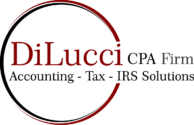Most business owners are familiar with the idea that the IRS has quarterly tax requirements, but we’re often asked about how much should be paid. Our answer is – it depends. Business owners are usually in different situations, and we have explained the three options that we see individuals choose:
Option 1: Pay the minimum amount required to avoid the IRS underpayment of estimated tax penalty.
This is called paying safe harbor. Safe harbor is the amount you can pay to avoid IRS underpayment penalty of your estimated taxes, even if you still owe more tax based on your return before the 4/15 tax deadline. Safe harbor is the lesser of 100% or 110% (if high-income earner) of your prior-year tax, or 90% of current year tax. Then, you divide this number by four and pay it evenly across the quarters (April 15, June 15, September 15, January 15).
Since current year tax is not finalized until your tax return is completed, safe harbor usually means paying based on prior-year tax. The easiest place to find this calculation is generally on the cover page of your income tax return cover page since most tax software will automatically calculate it. If you know that you’re going to owe less tax in the current year than the amount you paid on your prior-year return, then safe harbor will end up being less than the estimates calculated on your prior-year return, and you can choose to pay 90% of what you expect to be current year tax.
Option 2: Pay what you expect to owe in the current year, even when it’s greater than the safe harbor.
When you expect to owe more than the prior-year tax, you can choose to pay in more than safe harbor with the goal of not owing any additional tax at the 4/15 deadline.
This option works well for individuals who know that if the money remains in their bank account, they will likely end up spending it instead of saving it to pay the IRS at year-end. In fact, for many of our clients who have had previous balances with the IRS, we may even recommend they pay the IRS monthly or every time they take a distribution to ensure they are not falling behind on quarterly tax payments.
Option 3: Wait to pay until the tax deadline because you value the cash flow more than the IRS penalty.
The penalty for underpaying your estimated tax is one of the lower penalties by the IRS. It is 3% plus the federal short-term rate, which currently keeps the penalty between 3-4%. This is an annual penalty rate that is calculated based on the number of days the payment is late. As the federal short-term rate increases, this penalty will increase, but in recent years it has kept the rate low.
We see many business owners choose not to pay the IRS quarterly tax payments because they value keeping the cash flow for their business or even for personal reasons more than the current 3-4% penalty rate. As long as you pay your tax due before 4/15, then you should not incur the late payment penalty by the IRS, which is higher than the underpayment penalty.
Where to Pay
We almost always recommend that your safest option is to pay electronically to the IRS so that you get quick confirmation it was received. An easy way to pay the IRS is through IRS Direct Pay. Just make sure to apply your payment toward the correct tax year when submitting, and have your prior-year tax information available so you are able to pass the identity verification.
CONSULT WITH AN EXPERIENCED TAX PROFESSIONAL
At DiLucci, our experienced team of tax professionals is here to help you with your business tax needs.
Our services include:
- Individual and business accounting
- Tax return preparation
- Internal Revenue Service (IRS) tax resolution
- Business bookkeeping
- Financial analysis
- Cashflow management
- Tax planning
As always, we’re here to help. Click here to schedule a consultation with our office and we’ll follow up with you promptly.

